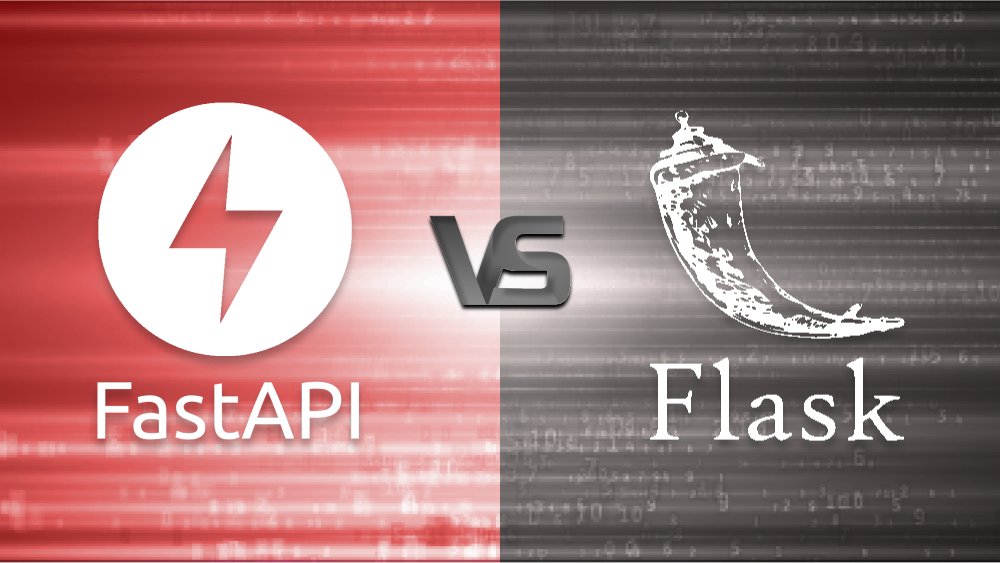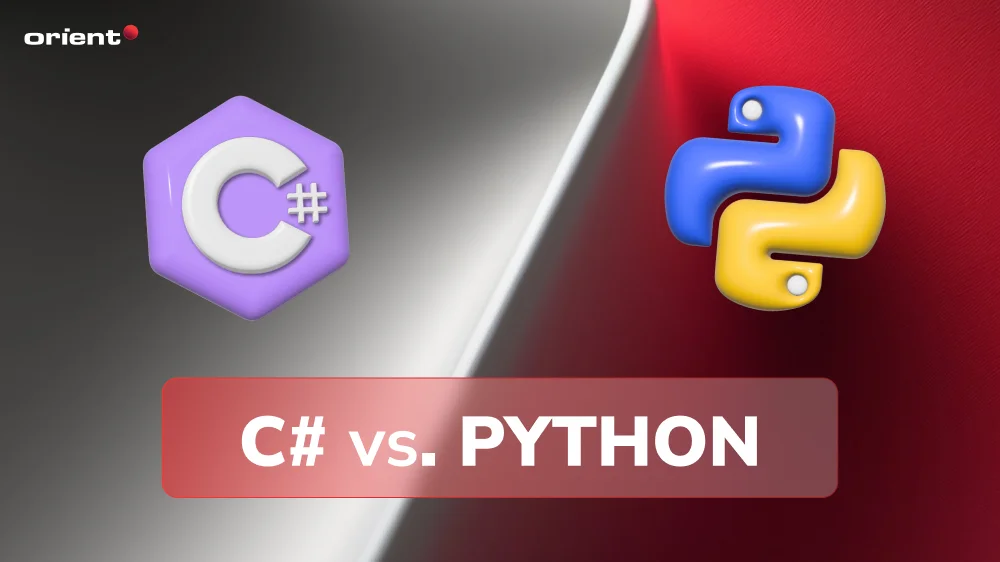
C# Vs. Python: Selecting the Best Programming Language for Your Project

Content Map
More chaptersC# and Python are two of the most popular programming languages today. Both have their strengths and weaknesses, including their unique applications. C# is particularly suited for web, mobile, and game development, while Python is often used for data science and machine learning.
In this article, you will learn about the differences between C# and Python, as well as their advantages, disadvantages, and use cases.
Key Takeaways:
- C# is a statically typed programming language developed by Microsoft, while Python is a general-purpose, dynamically typed programming language.
- C# is commonly used in web, Windows, and video game development, while Python is often used in data science and machine learning applications.
- An outsourcing partner can help you choose the best programming language for your project.
What Is C#?

C# is a statically typed, object-oriented coding language developed by Microsoft. As a statically typed language, each variable is defined at compile time, eliminating errors when converting code into a machine language.
As an object-oriented language, C# uses the concept of classes and objects, giving structure to software applications. This programming style lets developers reuse code easily, speeding up development time.
Despite being difficult to learn, C# has strong documentation and community support, giving developers the necessary resources to adapt and grow.
Key Features of C

C# has numerous features designed to streamline the software development life cycle. Let’s examine what those features are and how they work.
.NET Framework
The .NET framework is the main development environment for C#. It is used to develop software applications for Windows. It has various tools, programming languages, and libraries. Developers can use these resources to import functions into their apps – without writing code from scratch. Also, developers can use the .NET framework to run websites, desktop apps, and Windows services.
Object-Oriented
C# is an object-oriented programming language. It operates on four key principles: Inheritance, encapsulation, polymorphism, and abstraction. It uses objects and classes to give structure to software applications. Classes serve as the blueprint for objects, while objects contain attributes and properties, contextualizing their purpose within the app. C# is also compatible with functional and structured programming.
Automatic Garbage Collection
C# has built-in automatic garbage collection functionality. This is a memory management service that automatically frees up memory to optimize performance. It periodically scans the app, running in the background, to prevent memory leaks and other issues. When the app reaches maximum capacity, the garbage collector checks the app for excess memory, reclaiming all possible space.
What Is Python?

Python is a dynamically typed, open-source programming language. It is used primarily to develop applications in data science, machine learning, and artificial intelligence. Derived from C and Java, Python has similar features to C#, such as automatic garbage collection and object-oriented programming.
Python is considered easier to learn than C# and is a popular entry-level programming language for new developers. As a dynamically typed language, type checking occurs at runtime (as opposed to compile time in C#), which gives developers more flexibility but at the risk of more errors.
Key Features of Python

Python has several features to help developers build apps quickly and easily. Let’s explore these features in greater detail.
Support for Object-Oriented and Functional Programming
Like C#, Python supports object-oriented programming. This means developers can define classes as entities with attributes and characteristics. However, Python also supports functional programming.
Functional programming is the process of developing software by composing pure functions. Each function is designed to perform a particular function and run at a particular sequence in time. Functions can be reused across the application, reducing manual coding and speeding up development.
Automatic Garbage Collection
Also, like C#, Python has an automatic garbage collection feature. It works just like the one in C# but with a few differences.
The two main aspects of memory management in Python are reference counting and generational garbage collection. Reference counting deallocates an object when there is no reference to it in the software, while generational garbage collection keeps track of all objects in memory.
Dynamically Typed Language
Python is a dynamically typed language. This means the variable types are not specified until the code is run. While there is much debate between dynamic typing vs. static typing, dynamic typing is great for Python. It gives developers greater flexibility and speed but at the expense of app stability.
Developers also feel less constrained by the limitations of the language, allowing for greater freedom of expression.
What Are the Differences Between C# and Python?
C# and Python are two different languages used for different purposes. Here is a breakdown of how the two compare. We’ll evaluate their performance, integrations, multi-threading capabilities, and learning curve.
Performance
C# is a compiled language. This means that a target machine must directly translate C# code into native code before an application can be run. This process is called Just-In-Time compilation. It ensures an executable can be run on a particular machine.
Python, on the other hand, is an interpreted language. Instead of the target machine directly translating the source code, a third-party program interprets – reads and executes – the software.
Generally, compiled languages execute faster than interpreted languages. Thus, C# provides better performance than Python.
Integrations
C# integrates with the .NET framework. This is the main framework developers use to build web, desktop, and mobile applications for Windows. Within the .NET framework, C# is also interoperable with other programming languages, including Python, JavaScript, and VB.NET.
Python integrates with various frameworks and programming languages. These include .NET, Java, JavaScript, and C. This lets developers use more diverse libraries and shared code, enhancing Python app functionality and scalability. Developers can also use API versioning, modifying their REST APIs without fear of breaking their existing integrations.
Multi-Threading
C# supports multi-threading, which allows C# apps to manage two or more concurrent threads, also known as processes, at once. If your app must perform I/O bound tasks – tasks that rely on an input-output system, such as a hard drive or another peripheral device – then multi-threading in C# is a great solution.
Python also supports multi-threading. However, it requires more manual setup than C#. This is because, by default, Python has a Global Interpreter Lock (GIL), which allows only one thread to be in a state of execution at any time. Despite being an old feature, developers benefit from GIL for backward compatibility reasons.
To overcome the limitations of GIL, Python developers must either use multiprocessing modules or alternative Python interpreters. Although both approaches are effective, they take more time and effort to implement than C#.
Learning Curve
When it comes to C# vs Python, the consensus is that C# is harder to learn than Python. C# developers must have a strong understanding of Object-Oriented Programming (OOP), loops and conditionals, data types, and more. They must also be familiar with the .NET framework, which has a separate learning curve.
On the other hand, Python is relatively easy to learn and use. It has clear and readable syntax, which makes it easy for beginners to learn. It also does not require existing knowledge of other programming languages to learn. Those learning C# for the first time often benefit from pre-existing knowledge of C or C++.
How to Choose Between C# and Python
By now, you should have a good understanding of how each programming language works, as well as their differences. But how do you choose the best language for the job?
Are you outsourcing? Great! Then, your outsourcing partners will help you decide. At Orient Software, we take the time to understand your requirements. These include your project vision, technology stack, target audience, and business goals. This enables us to propose a custom solution that suits your needs, budget, and timeline.
Of course, it helps to have some internal knowledge. By understanding how each programming language is used, you can trust the advice of your software development team. Let us compare C# and Python.
When to Use C
C# is a general-purpose programming language. Developers use C sharp for web development and video games. Unity, a popular video game engine, is built using C# and C++. Developers can also use the .NET framework to develop dynamic websites and web apps. Plus, C# was made by Microsoft, so it’s perfect for developing Windows apps.
When to Use Python
Python is a very popular programming language. Developers use it for applications like data analysis and machine learning, automation or scripting, web development, software testing, and prototyping.
Since Python is easy to learn, non-programmers, such as doctors and mathematicians, use Python to solve data analysis and data science problems. Python has libraries to create functions for data visualizations, pie charts, 3D plots, and more.
Need Help Outsourcing Your Software Development?
In software development, choosing the right programming language is vital to a successful outcome. However, comparing your options can be hard. This is especially true for stakeholders lacking a strong technical background.
Let Orient Software take the stress out of your software development project. Our 350+ skilled and motivated staff have completed over 200 projects successfully. This includes projects for Microsoft .NET and Python code plus many more.
Contact us today. Discover how our software development services can empower your business.






